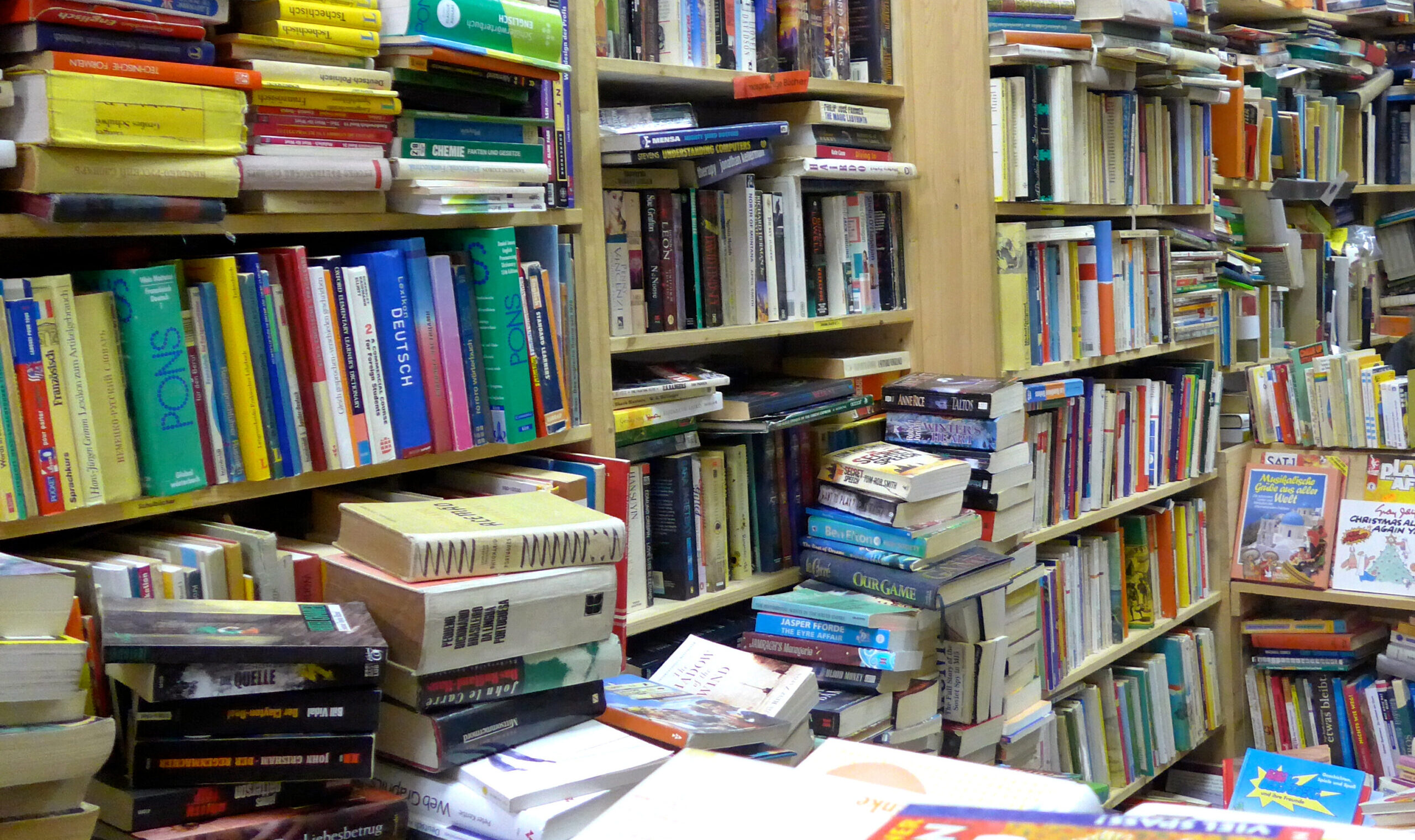America: ‘At Home’ With Absurd Consumer Excess

Every culture has a custom or symbol that encapsulates its entire way of life. For example, a salami hanging from the ceiling of a cramped neighborhood deli is Italy. Japan is a tea ceremony or an orderly subway rush hour. And for us, that condensed cultural symbol is not the Declaration of Independence or the ragtag militia or the all-American con man with a bridge to sell you. It’s a big-box store called At Home.
Founded in 1979 and hitting the stock market in 2016, At Home hails—where else?—from Texas. They are not particularly well-known or widespread, with a little over 200 locations at present; however, they plan to double twice over in the coming years. Most of their stores are located in existing buildings vacated by the likes of K-Mart and JCPenney (and even, in Frederick, Maryland, a vacated Walmart). Consider how large one of these buildings is, and then consider that At Home is dedicated entirely to home goods and decor. Imagine a lovechild of Michael’s and the aforementioned Walmart, then imagine dropping acid in said store, and you may get a small sense of what it is like to browse At Home.
The 70s-vintage floor tiles and drop ceilings have been stripped, leaving only the shell of the K-Mart or other defunct chain, making the average At Home location look more like a Home Depot or Costco. Heck, the shopping cart bay at the entrance is bigger than lots of small stores. As long as you can think of something tangentially related to home organizing or decor, it exists in this gargantuan retail warehouse.

A first-time visitor’s emotions are likely to run from exhilarated to wryly amused to vaguely discomfited, as the funhouse-mirror-like feeling of the place dawns. It is staggering how many aisles there are, how many sheer combinations and permutations of stuff. On top of this, the merchandise has an uncanny-valley feel to it, almost as if it has been generated algorithmically based on a Chinese computer’s idea of what an American with too much time and money would like to buy.
You can choose from 10 or 20 slightly different chairs in different colors; four different aisles of pillows with or without embellishments, in every color, texture, and size imaginable and then some; T-Rex skeleton bookends, T-Rex head decorative plaques, oyster shell bookends, plaques inscribed with shallow therapeutic babble, some of which gives the impression of having been engineered randomly out of a word bank. Others are a bit less random, following more of a “Verb phrase/adjective/noun” pattern; one plaque for a child’s room reads “Stay clever, little fox.” The next one reads “Dream big, little whale,” with cute animal illustrations and faux-driftwood frames. There are artichoke wreaths, artichoke-shaped fake flowers, and perhaps, somewhere in there, a “Welcome to Our Home” plaque framed by sketched artichokes. You can buy a plaster cactus, a plaster creepy cat, and a lot of other three-foot-tall plaster statuettes. Or you can pick from an ungodly variety of plastic plants at “The Greenhouse,” where the cheery dystopian slogan reads, “No sun? No problem.” And we’re just getting started.

It is almost like being on the Internet, where there is an illusion of endless choice, much of which is really composed of swaps and recombinations of a much smaller number of elements, whether it be porn or superheroes learning colors on YouTube. Type it in, and it’s out there somewhere. Here, imagine it and it’s certain to be on one of those shelves. This is not just an amusing comparison. The unreality of the commercial Internet spills over into “meatspace” here; it is a real-life version of the “long tail” of Amazon search results, where “egg slicer,” for example, will get you a handful of name-brand products, followed by hundreds of generic products for 7 pages, with some searches returning tens or hundreds of pages of products, all of which pretend to have some kind of customer service information tucked inside their plain cardboard boxes. It’s also reminiscent of the spammy, dodgy kids content on YouTube (“Finger Family Song for Learning Colors with Superheroes – Nursery Rhymes Songs,” “Superheroes Finger Family and more Finger Family Songs! Superhero Finger Family Collection”—you get the idea.)

Yet in between all the flotsam and jetsam of global containership trade is something occasionally poignant; yes, even that “Little fox” plaque, hanging above a newborn’s crib. The feeling is almost arresting—it an unexpected intrusion of humanity, a sort of reverse glitch in the matrix. One feels that one has briefly made eye contact with someone far away in a third-world factory, desperate to make a bare living for their own children by making trinkets for ours. The ability of a piece of mass-produced junk, more likely than not manufactured under conditions adjacent to slavery, to spark genuine emotion, feels like a mystery the magnitude of the Trinity. It is also the kind of thing that can spark a revolution.
One is tempted to think of left-wing slam poet Andrea Gibson’s line about “the sweatshops our children call the North Pole.” Surely there is some cost to all this. Perhaps the environmentalists and the fundamentalists are right that we are racking up some sort of planetary bad karma. I recall a college professor of mine who remarked that in a couple of decades we will marvel at the idea of all-you-can-eat shrimp or 20 choices of peanut butter. Perhaps one day we will marvel at the thought that immeasurable and irreplaceable time, talent, and treasure was wasted on fake artichokes and plastic oyster shell bookends.

What is striking, and poignant in its own way, is how ephemeral all this stuff is likely to be. Skip forward through a few years of occasional use or dust-gathering, and all of it might as well be emptied directly into the landfill. Mid-century social critic Vance Packard facetiously imagined, in his 1960 book The Waste Makers, that factories might have to start building their assembly lines out over cliffs, so that the economy could keep humming despite increasing market saturation.
Like so much social criticism once dismissed as hysteria or communist sympathy, we have actually gotten there, albeit in a slightly more indirect way. Will a single one of the thousands upon thousands of items in a single At Home store become an heirloom, or even make it to 20 years? If the current economic slowdown turns into a true contraction of globalization, we may well mourn all those cheap housewares we bought and tossed for fun. We will realize, at the very least, that the notion of shopping as a form of recreation depended upon a peculiar set of fragile arrangements.
Indeed, when you step outside my own At Home location in a has-been Northern Virginia strip mall, and observe the wide and barren sidewalk, the hulking abandoned anchor store at the other end, the empty Chinese buffet next to a gun store hidden by smoked glass, the whole place takes on the distinct feeling of a ruin. The tail is wagging the dog, the algorithms are determining what we buy, watch, eat, and even who we make love with, but perhaps the worse it gets, the more we will need our bread and circuses.
The point—of course—is not that we should replace modern consumer capitalism with a Soviet bread line, but rather that the two are, in their own ways, equally ridiculous. We have so much choice that there is no longer a choice to abstain. At Home feels like the fever dream of a refugee fleeing communism, vowing to absolutely invert everything about his ossified, depressing economy; one can imagine its CEO as the hero in an Ayn Rand novel. It isn’t that interesting, really—it’s just a big old store out of Texas—but it’s nearly that absurd. We should be thankful to live in a country where such a thing is possible; but perhaps we’d also be better off without it.


